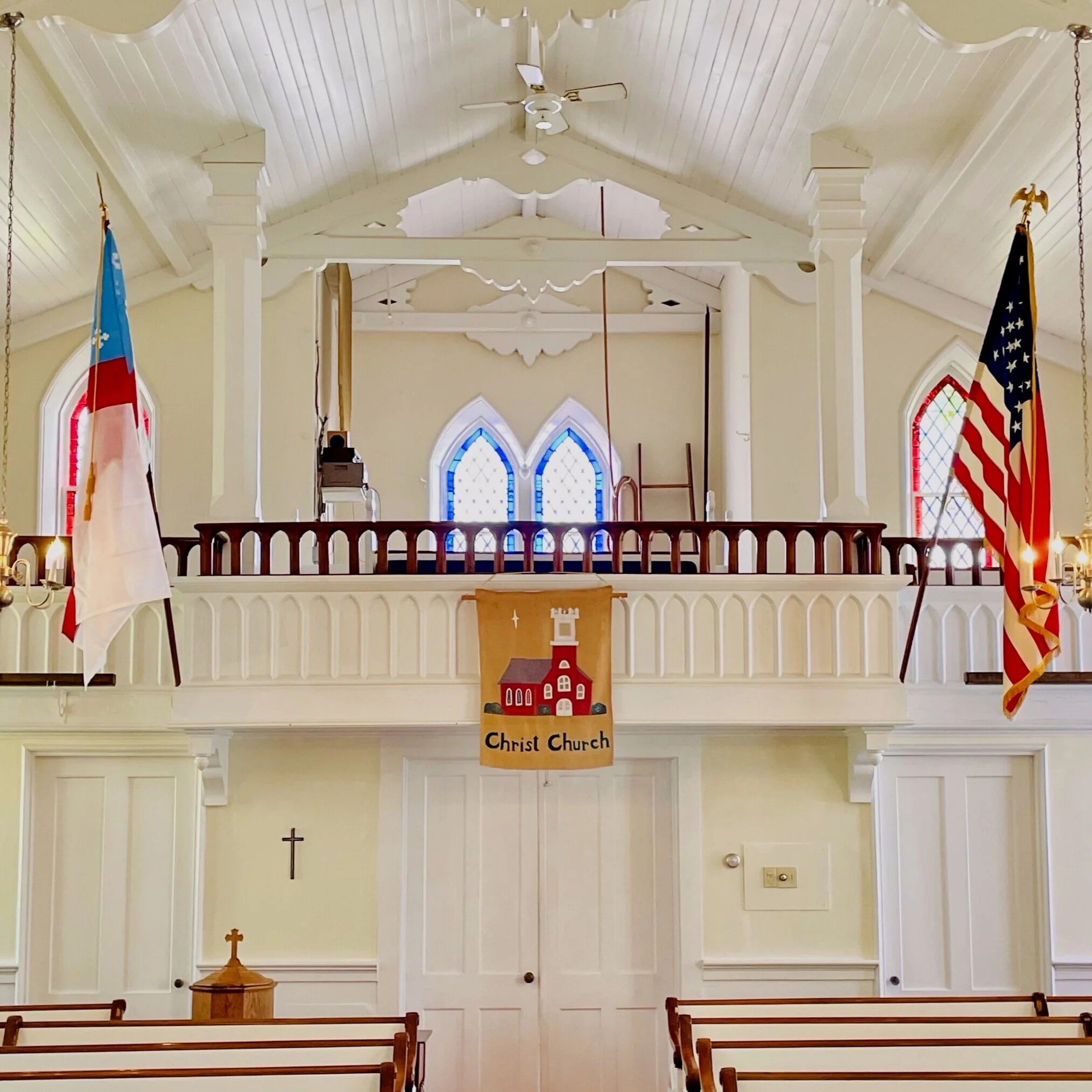our church
Christ Episcopal Church is a historic Episcopal church located on the town green of Bethlehem, Connecticut.
Founded as a parish early in the 19th century, it has been a central part of the life of the town ever since. The building is an outstanding example of Gothic Revival architecture, and its unique metal roof helps incorporate it visually with other historic buildings in the area around the green. Major renovations were designed by R. W. Hill, a noted Waterbury architect, early in his career. It also houses a Jardine tracker organ designed in 1855. Along with the First Congregational Church across the street and the Bellamy-Ferriday House on another side of the town green, Christ Episcopal Church helps anchor the historic center of this small rural town in Litchfield County, Connecticut. Our church was Designated National Historic District building on December 16, 1982.
1800s
Even while the official state religion of Connecticut was still the Congregational Church, in 1807 fourteen individuals living in Bethlehem declared themselves to be members of the Protestant Episcopal Church in the State of Connecticut, according to a legal notice of their intention to meet submitted to the local Justice of the Peace on March 13 that year. The notice declared that the meeting was to be held at the home of Amos Lake. Earlier meetings may have been held at the home of George Bloss on Carmel Hill in town. It was not until after the disestablishment of the Congregational Church in Connecticut by the new state constitution in 1818, however, that any serious thought was given to erecting a sanctuary. Even then, it was not until 1829 that ground was finally broken on a site adjacent to the town green. “Mr. Atwood” contributed $500 toward the effort, but even his generous gift did not hurry along the construction. In May 1831, the building committee finally voted that the inside of the church be finished off “after the plan entitled No. 1, with circular seats with one pair of stairs to the pulpit.”
The initial building was 30 feet by 44 feet and built in the Greek Revival style of architecture, with bricks from the local Thompson brickyard. Shortly after the sanctuary was completed, in 1832 the town constructed a school building slightly to the north of the church. Finally in the fall of 1835, Bishop Thomas Church Brownell consecrated the building and named it “Christ Church.” Eighteen parishioners contributed $3,041 to an endowment to help pay the salary for a priest. The parish began to thrive.
By 1849, the current bell, made at Meneely Bell Foundry, was mounted in the tower in the center of the east facade. By 1869, the parish employed the services of a new up and coming architect in Waterbury, Robert W. Hill, to help them renovate their church. Hill had already begun to earn his reputation as an architect for notable houses in the area, but in 1869 he was hired to take on larger projects in addition to the renovation of Christ Church. These included City Hall in Waterbury and the Opera House block in Ansonia. The renovations at Christ Church were extensive, and included adding a chancel and a raised altar, creating two aisles in the sanctuary instead of one central aisle, and a sacristy. The ceiling was also lowered, which entailed redesigning the gothic windows as well. The renovations were completed by 1871.
The stress surrounding the renovations may have contributed to a difficult moment in the history of the parish in 1874, when at the annual parish meeting the question was asked whether to remain open because of the financial strain. Some members had already left to join the Congregational Church across the street at the invitation of the Congregationalists. However, the parish survived the year and paid off their debts, although with reduced hours for the priest for many of the ensuing years.
1900s
By 1931, the fortunes of the parish rose with the gift of funds used to construct and endow a new parish hall and kitchen, named after one of its former senior wardens, Albert Johnson. Attendance had returned to former levels, and the parish was able to support many of its former ministries, including a choir and an active Sunday School program. In fact, the town leased the former Town School building to the parish for its Sunday School. In the mid-1950s, two offices, a meeting room, and a basement were added behind the sanctuary. In 1966, a generous memorial gift enabled the parish to purchase, move, install and renovate its current historic organ. In 1983, the parish was able to construct a connector between the parish hall and the church offices.
For more information about the history of Christ Church click here: https://en.wikipedia.org/wiki/Christ_Episcopal_Church_(Bethlehem,_Connecticut)



